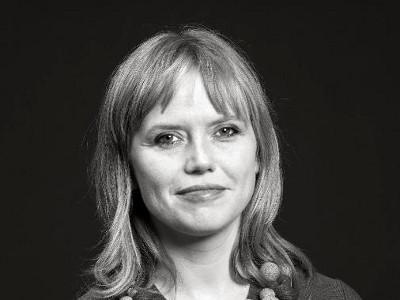Bio
Oddný Eir Ævarsdóttir was born in Reykjavík in 1972. She studied philosphy at the University of Iceland, graduating in 2000 with an MA in political philosophy. She studied for her doctorate in the Sorbonne for five years, receiving a DEA-degree for her thesis on the political importance of the archive.
Oddný Eir has been a researcher in the Icelandic museum and archive scene, and worked with the singer Björk on projects of nature preservation and innovation. She also worked with Björk as a writer, among other things, on the Biophilia project. Oddný has worked with artists as a writer and curator, among those is her brother Uggi Ævarsson; together they ran the exhibition space Dandruff Space in New York city, and currently run the small publishing company Apaflasa. Oddný Eir has been active in the Icelandic cultural scene for the last few years, editing three art books, editing the website Náttúra.info, lecturing and teaching regularly at the Icelandic Academy of the Arts.
Oddný’s first book of poetry, snjór piss hár (snow piss hair) came out in 2000 as part of a case with five small print books by various authors, published by Apaflasa. Her first novel, Opnun kryppunnar (Splitting the Hump), was published in 2004. She has since published books of various prose and four novels, most recently Undirferli: yfirheyrsla (Duplicity: an Interrogation, 2017).
Jarðnæði was nominated to the Icelandic Literature Prize in 2011 and was the winner of The Women’s Literature Award, Fjöruverðlaunin, in 2012. Heim til míns hjarta was nominated for the DV Cultural Prize in 2009.
Oddný Eir lives in Reykjavík.
Publisher: Bjartur.
From the Author
From Oddný Eir Ævarsdóttir
I had to turn in the manuscript in just a few months but I’d taken on an article about art for one of the main galleries and felt as though I could do neither because my brain occupied both places at once, the big manuscript and the small text, which really wasn’t that small. I cursed it and dragged my feet, couldn’t imagine diving into a text that was keeping me from finishing writing up the manuscript that was to become an actual book. But then I decided to use it to my advantage; to practice my approach on the small, more difficult text; if I could find a new way to express my ideas in writing then I might use that method to rewrite the bigger text. I decided to print out all the sketches, experiments, drafts, and arrange them around me, put Schubert on, the right sonata for this day of the week and spray on some importunate scent, and write it by hand using a hard point felt tip and a roll of paper. Tell myself that I couldn’t edit anything after the fact, no cutting, no pasting, no fiddling. Having welcomed the digital revolution and already having done my fair share of cut-ups. I had to go back to the source. A big glass of sour whey and away we go. And nothing better interrupt because thought and non-thought are marching to a certain beat, as when you need to fit some emotionally complicated event into a single journal entry so you write quickly and make instinctive connections but at the same time keep your mind one step ahead of the sentences so there’s still tension, so there’s structure, not logic or narrative necessarily but a connection, something to make you feel as though the mind or heart is being fed.
The next challenge: Don’t cut the text off, don’t reject it without having read it first. Make yourself review it. Preferably later that same night. You tell yourself that during breakfast you’ll type it up and not change a thing. Then that’s it, you’ll live or die by this text, even though it’s buggy, no good really, but this is the method, I’ve committed myself to this new approach. Sufficiently tired in the morning you’re able to type in the text without condemning it, you’re like any other writer rewriting a manuscript. But as writers do you start scribbling in the margins of the printouts. Drawing arrows to indicate the movement of a paragraph. Erasing. And then you just want to go over these changes before you turn in the text. And the days go by and maybe by the twenty-first draft you start to get some idea of what you’re writing. And then you want to start over. But because of the deadline you decide rather to try and write a clearer meaning into this god-awful mess. Up until the press starts rolling and everyone around you is having a nervous breakdown. No matter how self-conscious I usually am about intruding on others, of being impolite and crossing people’s boundaries, I seem to get more impertinent with every deadline. Sit back and have another glass of whey, glance at the scroll, nudge it along the floor with my toe and feel as though it’s already been a half hour since I started. But my brain is two steps ahead and knows that it’s been far too long and the fact that the text hasn’t become more meaningful during all this time is frankly ridiculous.
This is one way of doing it, a technical description. But the way a thought or meaning is born in the mind, or how the idea of particular work gets compressed into your brain over time, that I can’t describe. I can say that for me, it’s better it get well compressed before I put pen to paper. In the run-up to that, it’s OK to let the air out a little bit, in order to take notes. But to make something of those notes, from all those notebooks, that’s a challenge. An ordeal. For all but that one moment, when you’re in the mood for notes. When you’re not too judgmental, just welcoming all these scratchy, fragmented notes. In the beginning you’re scratching, and also in the end when you turn in the text, you scratch out a handful of dirt to throw down after it. Or is it like dogs do, scratching the air around their shit, just for appearances, waving a classy goodbye before disappearing into a black hole or a dog’s den or a raven’s nest or whatever you might call the space your mind retreats into before it edges towards the next text, telling itself that this time there’s a new method and that this time there’ll be fewer detours, this time you’ll get to the core right away.
And on the subject of substance. I feel it’s best, in the beginning of writing every text, to think: What do I have to say about this thing? And then try to translate that into words. Even though that’s impossible.
Oddný Eir Ævarsdóttir, March of 2013
About the Author
Love, memory and language in the works of Oddný Eir Ævarsdóttir
A dialogue with the past is an ubiquitous feature of Oddný Eir Ævarsdóttir’s works, in which she repeatedly turns the spotlight on her position vis-à-vis her subject matter, which more often than not is drawn from autobiographical material and the web of memories stretching back into the past. She generally makes no attempt to serve up a pristine picture of the past; on the contrary, her aim is to say how the picture strikes her and what significance it has for her at the time she is writing.
City of Birth and The Hunch Opens
This dialogue is much in evidence in Oddný’s latest work, Fæðingarborgin: Bréfabók (City of Birth: Book of Letters), which appeared in Vol. 3 of the periodical 10.05 in 2015. Oddný’s grandmother gives her some letters written home by her father, Ævar Kjartansson, when, as an exchange student in Argentina and Brazil at the age of seventeen, he lived for a time in Rosario, the town where Che Guevara was born. Oddný makes a transcript of the letters and sends it to her father, almost forty years after his time as an exchange student. In Fæðingarborgin we are shown the e-mail exchanges between father and daughter where they discuss the contents of the letters and he describes how strange it is ‘to see my face like this’ as it was many years ago. After this Oddný realises how tactless she has been, unearthing a time that was almost forgotten to her father and perhaps was supposed to be forgotten. Yet, undeterred, she describes the letters as ‘treasures’ and says she is ‘convinced that it is good for you [her father] and us, your descendants, to know something about the past.’ (xx)
[[{"fid":"4933","view_mode":"default","fields":{"format":"default","field_file_image_alt_text[und][0][value]":"Fæðingarborgin","field_file_image_title_text[und][0][value]":false},"type":"media","field_deltas":{"1":{"format":"default","field_file_image_alt_text[und][0][value]":"Fæðingarborgin","field_file_image_title_text[und][0][value]":false}},"attributes":{"alt":"Fæðingarborgin","class":"styles original media-element file-default","id":"styles-3-0","data-delta":"1"}}]]
Later, she succeeds in arousing her father’s interest in his own history when he realises how, in recent years, he has been nourishing a memory of this period that has turned out, on closer examination, to be false and he has therefore had a wrong idea about his dealings with the family he lived with as an exchange student. Then Oddný considers the question of the difference between concealment and oblivion, and whether the latter is really just unconscious concealment. As scholars in the field of cultural memory have repeatedly pointed out, we all tend to simplify the meaning of ‘forgetting’ in day-to-day speech and to associate it automatically with something negative. In fact, forgetting is a more complex phenomenon and it does not always serve the same purpose; in certain circumstances it can be necessary, while in others it can be outright dangerous.
In Opnun kryppunnar (The Hunch Opens), which appeared in the ‘black series’ from the publishing house Bjartur in 2004, Oddný explains how respect for the past was an integral part of her upbringing and how she was taught the importance of keeping in touch with the olden days. She describes how her father strove to record conversations with old people in their final illnesses in various parts of the country as a means of preventing an entire body of oral tradition from disappearing with them into the grave. But she is also aware of the importance of forgetting, which plays a much larger role in memory than we generally realise – because as we call certain past events to mind, we are choosing to forget others. The dialogue with the past is the precondition for its preservation, and if we do not thin it out, we run into difficulties. Therefore Oddný urges readers to ‘open the hump’: ‘Like camels, we keep our reserves – our vocabulary and other inheritance – in the hump on our backs. And if we don’t go through it from time to time and throw some things away, there is the danger that our backs can grow excessively’. (35)
[[{"fid":"2877","view_mode":"default","fields":{"format":"default","field_file_image_alt_text[und][0][value]":"Opnun kryppunnar","field_file_image_title_text[und][0][value]":false},"type":"media","field_deltas":{"2":{"format":"default","field_file_image_alt_text[und][0][value]":"Opnun kryppunnar","field_file_image_title_text[und][0][value]":false}},"attributes":{"alt":"Opnun kryppunnar","class":"styles original media-element file-default","id":"styles-3-0","data-delta":"2"}}]]
Land of Love, Home to My Heart and Master of Love
Jarðnæði (Land of Love; Plan of Ruins), which appeared in 2011, is in part a travel book recording the author’s journeys in search of the perfect lifestyle that embraces both creative work and family life, where everyone has space to make experiments and grow, experiencing both closeness and privacy at the same time. These two concepts become leitmotifs in the book and the starting points of meditations on the relationship between man and nature and between the individual and society and intimate relations. Oddný sets off to northern England to look at the former homes of famous writers such as William Wordsworth and Freud’s home in London; in Iceland, she goes on a trip around the country with her lover. There, a journey in space becomes a journey in time as she visits elderly relatives in various parts of the country and hears how her ancestors lived off the land as small farmers, using muscle power and technology that has now disappeared or been replaced by machines. She uses this dialogue with the past to look into the future, finding solutions for the modern society which, at the time she was writing, had driven up an economic blind alley, and to lay the foundation for a nature conservation campaign.
This dialogue with the past reflects the author’s academic interests: Oddný has made studies of cultural memory and written about the political role of archives. These studies in fact make repeated appearances in her novels, either directly in the form of theoretical meditations and references to academic theories or else indirectly in her choice of subject matter and its treatment.
Apart from the novel Ástarmeistarinn (Master of Love), which came out in 2014, her fictional writings do not conform to traditional novelistic forms. Instead, they are characterised by a mixture or cross-over between fiction and autobiography in which the author tackles her own life and memories, with references to academic theories and discussions along the way. The recalling of the past in Heim til míns hjarta (Home to My Heart, 2009) is staged in a dramatic and memorable way. At the beginning, the narrator has arrived in a rehabilitation clinic after a total burn-out, unable to love or study any longer. The book has the subtitle ilmskýrsla (‘aroma report’), a reference both to the treatment she undergoes and to the narrative itself, since the unorthodox method followed in the clinic is based on an exploration of the narrator’s personal memory, arousing memories and recording them, various types of aroma being used to do this. To be cured, she has to learn the art of perfumery, smelling a particular scent and recalling the feelings and memories associated with it; often these are uncomfortable memories of events that have led to traumas of some sort. Then she has to break the connection between the aroma and the memory and at the same time to transform both so that the outcome is a new aroma and another approach to the memory. This is done by coordinating mind and body via the nervous system, the aroma that arouses the sense of smell playing a key role in this. Thus, perfumery becomes an alchemy in which the author seeks to ‘turn muck into gold’ or transform painful memories into maturing lessons that prevent stagnation and urge her to engage in creative action again.
[[{"fid":"2679","view_mode":"default","fields":{"format":"default","field_file_image_alt_text[und][0][value]":"Heim til míns hjarta","field_file_image_title_text[und][0][value]":false},"type":"media","field_deltas":{"3":{"format":"default","field_file_image_alt_text[und][0][value]":"Heim til míns hjarta","field_file_image_title_text[und][0][value]":false}},"attributes":{"alt":"Heim til míns hjarta","class":"styles original media-element file-default","id":"styles-3-0","data-delta":"3"}}]]
An example of this transformation of aroma and feeling is the smell of coconut, which reminds her of the fact that her former lover chose to live on an island in the south rather than come to Iceland with her. To be able to enjoy tropical fruits again, she has to break the connection between this specific smell and that particular ruptured relationship.
Inside this framework we are given a review of the author’s past love affairs: she describes the awakening of her sexual awareness while living on a farm and meeting a young farmer from the next farm; the warning given by her grandmother, who believed that one loves only once and that anyone who loves many times will go mad; a stalker in Budapest who thwarted her attempts to make contact with the opposite sex and caused her psychological trauma; and the difficulties involved in loving in a foreign language of which one has only a limited command. Finally, we meet a wounded soldier in the clinic who also appears in Oddný’s next book, Jarðnæði, where he is transformed into the ornithologist Fugli (‘Orni’); Oddný and he start a love relationship and go looking for a place to live that will suit their lifestyle. These anecdotes and memories also crop up in other works and illustrate what an inexhaustible source of material love is in Oddný’s writings; this is crystallised in the title of the novel Ástarmeistarinn. In fact, this title echoes what a Persian friend says in another place and another book: ‘Love is the master who teaches us how to live. In its fire we distil our hearts and transform their passions.’ (Heim til míns hjarta, p. 29)
Burning passionate love between lovers is not the only type Oddný examines. She is also concerned with her love for her relatives: her family, her mother and father and, not least, her brother. She and her brother are very close and in Jarðnæði, where her relationship with him is the focus of the first part of the narrative, she considers the question of whether they are perhaps too close, in a way that interferes with her relationship with other men or lovers, since her closeness to them does not stand up in comparison with the unconditional sibling closeness that has grown and developed from the time of her brother’s birth and on into adulthood. In Oddný’s works, she recalls memories from their youth, both at home with their parents and also on the farm with their grandparents. In Jarðnæði these memories form the basis for a meditation on the place where she will choose to live in future and what structure she would like to have for her own family.
[[{"fid":"2407","view_mode":"default","fields":{"format":"default","field_file_image_alt_text[und][0][value]":"Jarðnæði","field_file_image_title_text[und][0][value]":false},"type":"media","field_deltas":{"4":{"format":"default","field_file_image_alt_text[und][0][value]":"Jarðnæði","field_file_image_title_text[und][0][value]":false}},"attributes":{"alt":"Jarðnæði","class":"styles original media-element file-default","id":"styles-3-0","data-delta":"4"}}]]
Fiction, the past and academic theory vie with each other in Oddný’s works. The imagination has free rein in Heim til míns hjarta and the reader is not always sure what is happening in reality and what is happening in dreams. The author’s strength and power also lie in the tone of the stories: Oddný moves deftly from the deeply learned and sublime to the comic in which she takes neither herself nor her narrative too seriously. As she herself explains in Blátt blóð (Blue Blood, 2015), there is a difference between taking oneself seriously and being self-important: ‘[...] remind myself regularly that I am a writer and coax myself over into being serious about it, not self-important or pompous, just serious; there is a difference, and vive la différence!’ (46) Giggles and farting often occur in her texts and remind us that even though theories address very serious matters such as a just view of history and politics under dictatorship, the theories or academic discussions should not be taken too seriously or placed on a pedestal. It can prove more fruitful to approach them from a basis of play and imagination.
These two things – formal theoretical frameworks, on the one hand, and fiction, embracing play and imagination on the other – are often presented as opposite poles in Oddný’s works, and also come into conflict. Sometimes the collision between the two proves fertile; sometimes it simply creates tension and antagonism. The two poles are even personified in the novel Ástarmeistarinn, the first story in which the author confronts her own self and her autobiographical past and memories. The main protagonists, Fjölnir and Anna, are opposites yet are attracted to one another. He is a psychologist; an academic and teacher in the university community who is trying to step outside that framework and bring a different angle on his subject for a new book. She is a healer who uses unorthodox methods to cure people of their aches and pains; she has read a lot of fiction but rather less of factual text-books and says she lacks the training to be able to tackle a formal academic discipline. They meet by chance on the island of Grímsey. Shortly after that, Anna challenges Fjölnir to a chess match by correspondence, and this leads to a regular exchange of letters between them. The reader sees the letters that pass between them and also their private thoughts about the content of the letters and other things that would otherwise remain unsaid. Here, the personification of theory and fiction gives the author an opportunity to investigate the borderlines between them from a new perspective, and the fictional dimension creates a distance from the world of her own experience.
[[{"fid":"2813","view_mode":"default","fields":{"format":"default","field_file_image_alt_text[und][0][value]":"Ástarmeistarinn: Blindskák","field_file_image_title_text[und][0][value]":false},"type":"media","field_deltas":{"5":{"format":"default","field_file_image_alt_text[und][0][value]":"Ástarmeistarinn: Blindskák","field_file_image_title_text[und][0][value]":false}},"attributes":{"alt":"Ástarmeistarinn: Blindskák","class":"styles original media-element file-default","id":"styles-3-0","data-delta":"5"}}]]
Blue Blood and a foreign language
There are echoes between the letters in Fæðingarborgin, which I mentioned at the beginning of this article, and the travel narrative in Blátt blóð, both published in 2015. In the second, Oddný, who is writing about her own life, goes with her husband to Rosario, where her father had been many years earlier, and recalls the letters from him which she read a few years previously. Her companion is the ornithologist Fugli from Jarðnæði, who first appeared as the wounded soldier in the rehabilitation clinic in Heim til míns hjarta, and their relationship creates links between these three works. In Blátt blóð, on the other hand, their relationship has run its course and the journey is an attempt to salvage it. They have not managed to conceive, and the author’s longing to be a mother, which almost becomes an obsession, is not compatible with her husband’s needs. This discrepancy creates tension that eventually proves too much for the relationship. In Blátt blóð, which bears the subtitle í leit að kátu sæði (‘in search of cheery semen’), Oddný comes to terms with the despair and sorrow that follow from wanting a child but not being able to have one. The account of the breakdown of the relationship is one part of this process, but by the end of the book the author has achieved resignation. Infertility is a painful, difficult and delicate subject, but Oddný tackles it with sensitivity and pleasure in her narrative. For example, she considers the maternal role and the ‘official’ portrayal by the community of the feminine, self-sacrificing mother, which she tries to redefine. As before, she looks for models in the storehouse of the past, among her female ancestors and how they managed their lives and raised their children.
[[{"fid":"4378","view_mode":"default","fields":{"format":"default","field_file_image_alt_text[und][0][value]":"Blátt blóð","field_file_image_title_text[und][0][value]":false},"type":"media","field_deltas":{"6":{"format":"default","field_file_image_alt_text[und][0][value]":"Blátt blóð","field_file_image_title_text[und][0][value]":false}},"attributes":{"alt":"Blátt blóð","class":"styles original media-element file-default","id":"styles-3-0","data-delta":"6"}}]]
Love and the dialogue with the past are Oddný’s main subjects, but neither would be a potential topic for examination if it were not for language, which is also a frequent focus of speculation in her works. She considers language, how it has developed and at the same time her skills in using it to express her point of view and record her experience. She cites etymologies and word origins to examine the connection between language and thought. In dealings between people, language is a bridge between the thoughts of individuals, linking them together. That is true when things go well, but language can also often be the cause of misunderstandings. Such misunderstandings illustrate how the meanings of words are not fixed but fluid and take account of context and time. The word jarðnæði (literally ‘earth-peace’, with connotations of ‘private space’, ‘peace’, ‘sanctuary’, ‘convenience’ and ‘privacy’) gives rise to a misunderstanding of this type between the author and her lover, which makes her realise that the meaning of the word is not as evident as she originally assumed. When she tells him of her dream of living close to the wilderness in complete næði (the peace element) – having a place where she can pursue her interests – he asks whether she would not have to be alone to experience næði of this type. She does not see it like that, however, and thinks that the undisturbed, unconstrained state she has in mind could involve a form of closeness. While she imagines a little patch of land in beautiful surroundings as a home for creative and happy family life, he is thinking of a privy or a morgue and is under the impression that complete ‘peace’ (etc.) of this type, particularly involving some connection with the earth (the jarð- element) would involve death and the natural end of things in which the individual is transformed into earthly remains and reunited with his origins. The word undergoes such extensive and subtle changes in Oddný’s hands that she could be said to make it into her own possession; she exploits a concept that already exists in the language but imbues it with new nuances and a richer meaning. Behind this creation of meaning lies many years of thought and research, reflecting the narrative of the book and the author’s search for this place of sanctuary.
Lacking control of a language is a theme in this author’s work and is seen as a source of insecurity and self-doubt. In Opnun kryppunnar she describes the situation she finds herself in as a student in a large foreign city, pursuing studies in language that is strange to her. She fears that others will interpret her limited ability in the language as a limitation of a more general nature and look on her as childish or even stupid. Language difficulties have an effect on her social skills in day-to-day life; she avoids communication with other people and feels that she is inconveniencing others because she takes so long finding the right words. She avoids discussion with a complaining neighbour, is not sure how to answer an invitation to dinner on New Year’s Eve from a good family friend and feels like a child learning to speak when she is sitting at the table with others trying to follow the conversation. In Heim til míns hjarta, language difficulties also create imbalances in the relationship when the language of the relationship is the mother tongue of one of the couple. Here she describes how arguments with a lover over their relationship generally ended on etymological themes when he told her off for acting in a superior manner and playing with his language.
Oddný’s works are full of scenes that reflect her own writings, and of snatches of text and references to other writers, indicating a textual relationship with other works. In Heim til míns hjarta these passages of text are italicised and a list of acknowledgments at the end of the book shows exactly where they are taken from; in other cases, the reader has to guess. Thus, textual connections are sometimes repeated deliberately, but sometimes only hinted at. In Opnun kryppunnar the author takes particular pains to explain the reasons for the book. She relates how she decided to be a writer at the age of thirteen and studied philosophy at university as a preparation until she realised that philosophy was an end in itself. But it is clear that her desire to grapple with texts, and no less to make narrative out of her own life, arose early on, and the picture she gives of herself at the beginning of Opnun kryppunnar sets the tone for her subsequent writings: ‘I dig my way into my own story, into the heap of paper that has accumulated around me through the years, without having any idea where I will emerge from it.’ (7)
Vera Knútsdóttir, October 2016
Awards
2012 - Fjöruverðlaunin (Women’s literary prize): Jarðnæði (A Private Ground)
Nominations
2011 - The Icelandic Literature Prize: Jarðnæði (A Private Ground)
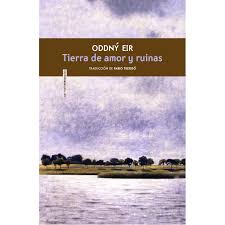
Tierra de amor y ruinas
Read more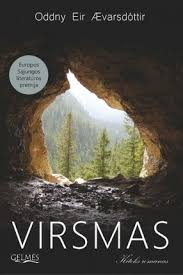
Virsmas: ornitologams ir archeologams
Read more
Land van liefde en ruïnes
Read more
Prostori
Read more
Undirferli: yfirheyrsla (Duplicity: An Interrogation)
Read more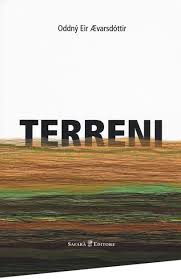
Terreni
Read more
Land of love and ruins
Read more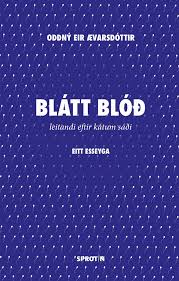
Blátt blóð: leitandi eftir kátum sáði: eitt eseyga
Read more
Blátt blóð (Blue Blood)
Read more
